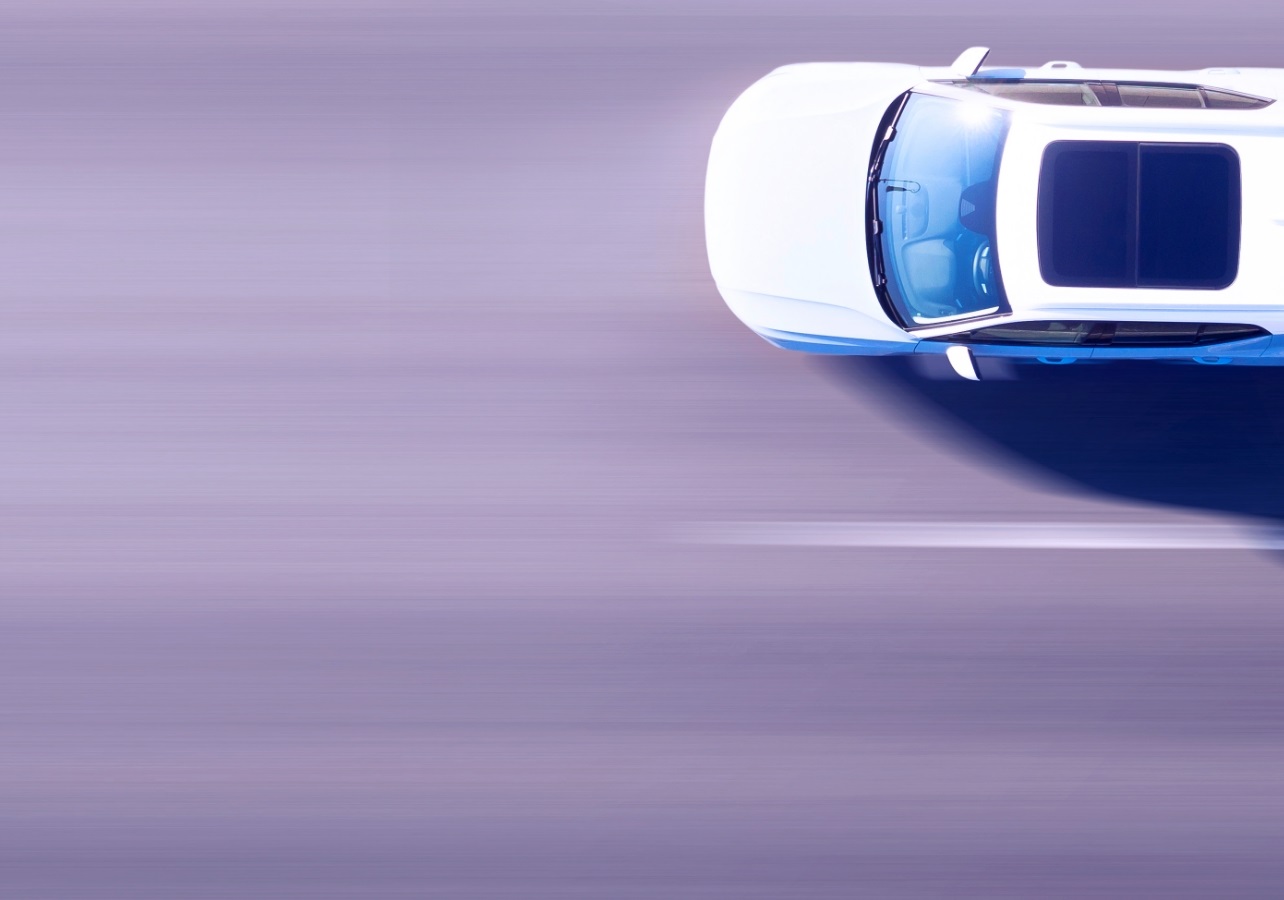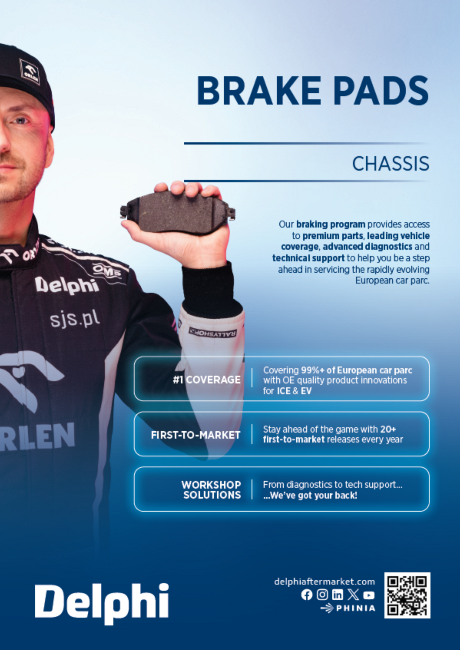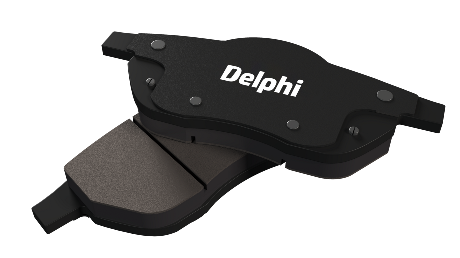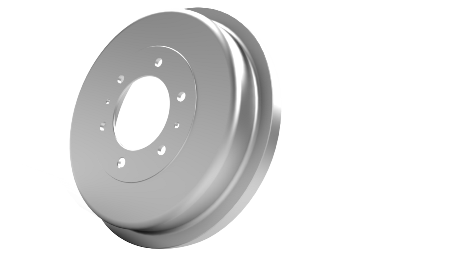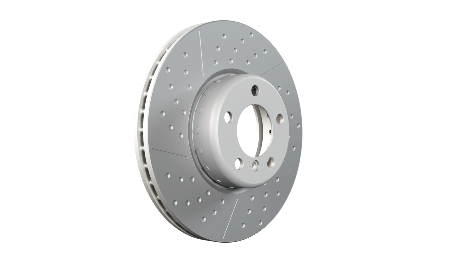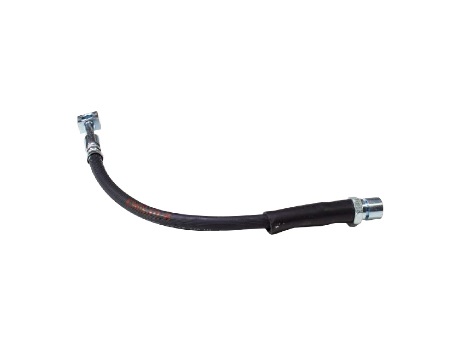Brake Discs

- Product Information
- Product Resources
- Enquire
- Related Products
ECE R90 certified brake discs
It should come as no surprise that our brake discs for new vehicles launched post 1 st November 2016 are R90 certified, alongside a range for popular older applications. After all, we’ve been meeting these quality standards for many years. The only difference today: our discs now undergo official ECE R90 testing schedules including performance, dynamic friction comparison, high load integrity and thermal fatigue analysis to certify that they perform to a prescribed tolerance of the OE part.
Learn more about Delphi’s R90 certified brake discs and why it matters.

Fully coated brake discs
Thanks to a special zinc-flake, silver Geomet coating, our coated brake discs offer greater and longer-lasting corrosion protection compared with many oil-dipped or partially painted and coated equivalents, whilst also being more cosmetically appealing. And because they have no oil to clean off, they save valuable labour and service time. All this makes for a better protected disc that’s easier to install, easier to dismount as well as being easy on the eye too.
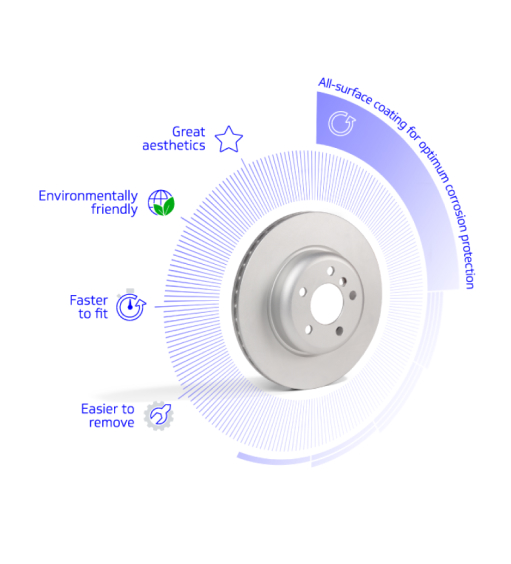
High-carbon brake discs
The added carbon content in our high-carbon discs helps to both reduce the risk of thermal cracking under high-temperature loads, and allows the discs to operate at a cooler temperature, for a more consistent braking performance. It also increases their resistance to distortion or warping for added durability, while delivering noise and judder free braking.
Cross-drilled brake discs
As well as looking cool from behind your wheels, our cross-drilled discs will keep your brakes feeling the same way – cool. The cross-drilled holes dissipate heat, brake dust and gases, helping to keep the pad surface cool and clean and reducing the risk of thermal distortion and warping. These same holes also prevent a film of water forming during wet conditions for improved braked response.
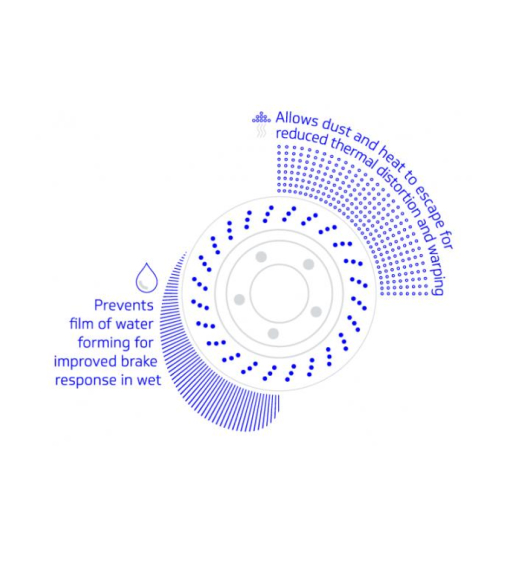
Vented brake discs
Our vented discs feature special internal cooling passages to maximise airflow. By continually moving air across the disc’s surface or through the disc itself, they allow more heat to be dissipated, improving both cooling capacity and resistance to cracking from thermal shock.
Brake discs with bearings
To avoid damage to the bearing during removal, and ensure the correct pressing in into the new, we offer a range of discs with these safety critical components already pre-mounted. They also include both toothed and magnetic ABS sensor rings, as per the OE, and the relevant fixing accessories. All for quick and accurate installation.
One-piece cast iron brake discs
Our one-piece cast iron discs offer an aftermarket alternative to BMW’s patented two-piece bi-metallic composite disc. Engineered from a single piece of cast iron, they deliver the same standards of consistency, longevity and braking performance as the two-piece disc, but at a fraction of the price. And to top it off, they come with fixing screws for quicker and easier fitting.
The Delphi Difference
-
100 years of OE experience, supplier to the world’s top automakers
-
OE heritage and knowledge built into every aftermarket part
-
Comprehensive portfolio for a wide range of vehicles and model years
-
Streamlined SKUs for easy inventory management
-
Support through tools, tips and training

Related product resources and downloads
Resource Highlights
In this article, you will find out about Brake Drums including; optimum safety and stability, manufacturing efficiencies and reduced servicing costs.
Despite the addition of electronic controls such as Anti-lock Brake Systems (ABS) and Electronic Stability Programs (ESP), making braking systems much safer and smarter than ever before, one part has remained relatively untouched - the drum brake. In fact, the working principles of the modern drum brake and many of its components, are broadly the same as the first system dating back to the early 1900’s. Here, we look at why the drum brake, considered vintage technology by some, is still used on the rear in many of today’s cars.
Optimum safety and stability
Of course, safety is the number one priority. So why wouldn’t you fit discs, generally considered the better of the two options, on all four wheels? The simple answer is braking bias, or in other words, how much effort is carried out by the front wheels, versus the back wheels.
Since weight transfers forward when decelerating, the front brakes arguably do more of the work. Indeed, the front brakes generate over two thirds of the vehicle’s stopping power, and with it, more heat. Given their superior stopping and thermal properties, discs are fitted in the front axle of most vehicles.
Conversely, most rear brakes are designed to provide less stopping power. This is critical for the stability of the vehicle - anything more, and the rear brakes would lock up, or activate the ABS system, every time the brakes were applied. Since this also means less heat is generated, the demands on the rear brakes are lower. And so for everyday driving, drum brakes can do just as good a job.
Manufacturing efficiencies
If there’s no real advantage, vehicle manufacturers will always lean towards the most economical solution. And for most production cars, that means drum brakes on the rear and disc brakes on the front. As well as being less complex to manufacture, drum brakes also incorporate an in-built mechanism that doubles as a parking brake – on disc brakes a separate device must be installed, adding further cost.
Added to this, drum brakes typically weigh less than their disc equivalent, making it an increasingly attractive option for car makers looking for ways to reduce overall vehicle weight, in order to meet increasingly stringent emissions standards, whilst also improving engine performance and fuel economy.
Reduced servicing costs
But it’s not just vehicle manufacturers that profit. There’s also a cost benefit for the vehicle owner. Drum brakes are subjected to less braking force and less heat than discs. And because they’re in a sealed drum, are less prone to damage from dirt, water and other corrosive materials. As a result, they typically last longer than most brake disc systems.
The all-in-one design, and reduced hardware, also helps to keep parts and labour costs to a minimum – a brake shoe, for example, can be replaced in less than ten minutes when the drum has been removed – so as a rule, drum brake maintenance is cheaper. Over the lifetime of a vehicle, these savings can soon add up, making the brake drum a cost-effective option for the car driver too.
With brake drums around for the foreseeable future, you’ll want to choose a brand that has been engineered to exacting OE standards – just like Delphi.

Visit our Technician Library for access to Documents and Downloads
Get in touch
The full Delphi product range
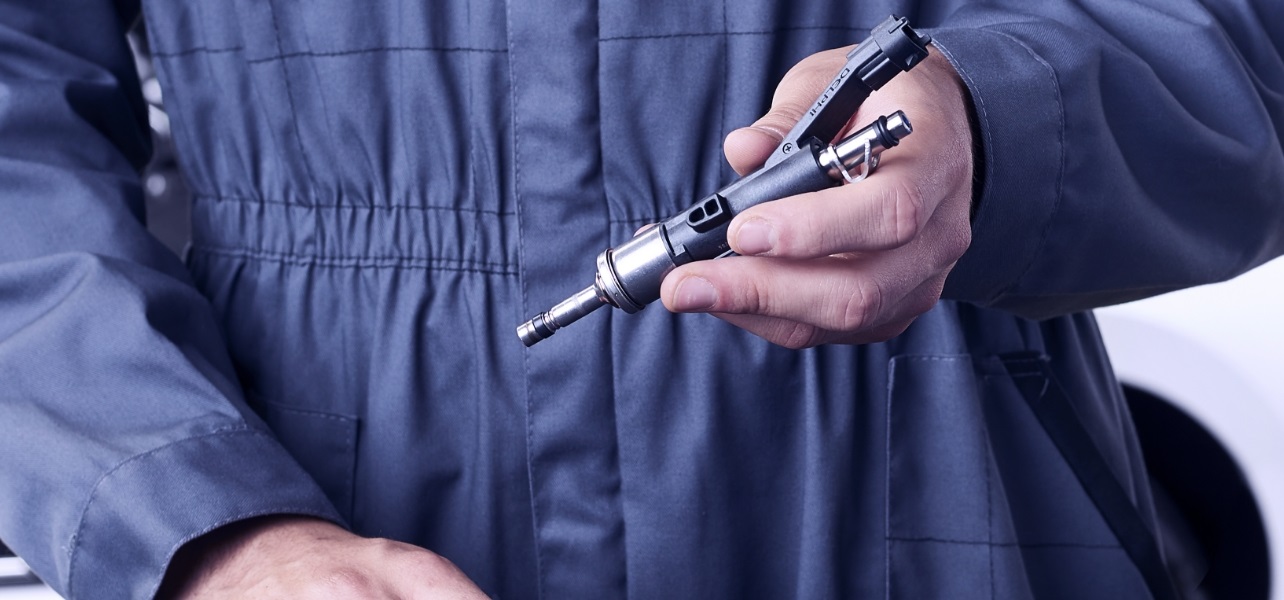
Find out where to buy Delphi parts
